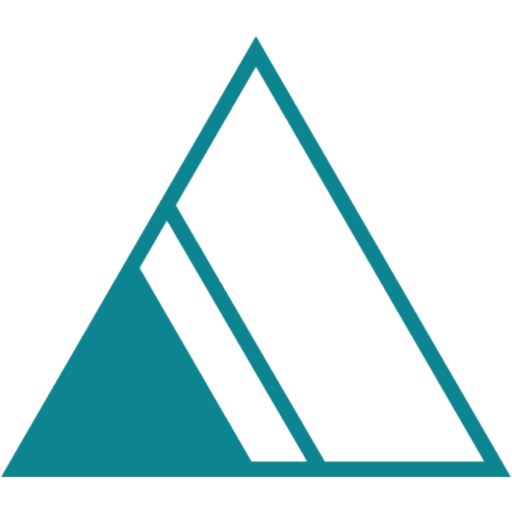A Chapter 13 bankruptcy is a court-supervised reorganization plan for individuals and couples. Debtors pay monthly payments to a Chapter 13 trustee to pay their debts. The amount of the Chapter 13 payment depends on several factors.
Key Factors for How Chapter 13 Payment Plans Are Calculated
The key factors used to calculate Chapter 13 plan payments are:
- Disposable Income
- Priority Debts
- Administrative Expenses
- Secured Debts
- Liquidation Analysis
- **Length of Chapter 13 Plan
Estimating Your Chapter 13 Payment
You will have a monthly payment in a Chapter 13 payment. The calculation uses complex bankruptcy forms. Ascend created a straightforward Chapter 13 bankruptcy calculator based on the forms to estimate your Chapter 13 monthly payment. The courts reference the latest November 1, 2024, means testing data here, which we also incorporate into our Chapter 13 calculator.
The Chapter 13 calculator also allows you to compare against a Chapter 7 bankruptcy along with other debt-relief options such as debt management or debt settlement. IMPORTANT: If the Chapter 13 disposable income test shows that your disposable income is high, it may show a very expensive monthly payment. We would be happy to walk through what that means with you or discuss the information.
Important things to note about the calculator:
-It is 100% free. Only an email is mandatory to provide the estimates to you. How does Ascend make money? We receive donations and small referral fees from different providers.
-Takes about 3-5 minutes to complete.
-Compares five different debt relief options, including Chapter 7 bankruptcy.
-Uses bankruptcy forms, and bankruptcy means test data for filings on or after November 1, 2024.
-Gives the best estimate given from the information provided.
-The estimate is based on your information today. Your Chapter 13 plan payment could increase if you make extra income.
What Is Your Disposable Income for a Chapter 13 Plan?
A Chapter 13 bankruptcy is a wage-earned bankruptcy. The debtors must pay all disposable income to their creditors. The Means Test, Schedule (income), and Schedule J (expenses) are used to calculate disposable income.
In the simplest terms, your disposable income is the amount remaining after subtracting allowed expenses from your monthly income. The court does not permit some expenses to be considered an unnecessary luxury.
Some expenses are limited to a maximum amount unless you can show a good reason why the expenses are higher. For example, your child has a special health condition requiring specific foods, which increases your budget beyond the average amount for a typical family.
Paying Priority Debts and Administrative Expenses
Some debts must be paid in full through the Chapter 13 bankruptcy plan. Priority debts include, but are not limited to, most debts owed to the government, income taxes, unpaid child support, and outstanding alimony payments. Administrative expenses include your attorneys’ fees (if paid through the plan) and the Chapter 13 trustee fees.
How Are Secured Debts Paid in a Chapter 13 Plan?
Some secured debts are also paid in full through the Chapter 13 plan, so you must include those payments to calculate a Chapter 13 payment plan. Secured debts include car loans and mortgages.
Car loans are often paid in full in a Chapter 13 plan. Depending on the age of your car and other factors, you may be able to pay the creditor what the vehicle is worth instead of the total you owe. If so, the remaining balance becomes an unsecured debt.
Mortgage arrearage (past-due mortgage payments) are also included in this category. You must resume your regular mortgage payments to the lender outside of the bankruptcy plan. When you complete your Chapter 13 plan, your mortgage is caught up, and your vehicle is paid in full.
How Long Does a Chapter 13 Repayment Plan Last?
A Chapter 13 payment plan is calculated based on a 36-month or 60-month plan. When you complete your Means Test, you compare your income to your state’s median income for a household of your size.
If your median income is less than the state median, you can file a 36-month plan or stretch out the plan to 60 months. However, if your income exceeds the state median, you must file a 60-month Chater 13 payment plan.
The state median income amounts are adjusted every few months. You must use the most current amount based on your filing date. The information can be found on the U.S. Trustee’s website.
The Liquidation Analysis Can Impact the Amount of the Plan Payment
The court performs a liquidation analysis to determine the amount unsecured creditors would receive if you filed Chapter 7 bankruptcy. The liquidation analysis is based on your non-exempt equity.
Non-exempt equity is the value of property that is not protected from being used to repay your debts. Bankruptcy exemptions vary by state. Some states require debtors to use the federal exemptions. Other states require debtors to use state exemptions, and few states allow debts to choose between federal and state exemptions.
For illustrative purposes, let’s assume your car is worth $24,000, you owe $5,000, and the bankruptcy exemption is $10,000. Your non-exempt equity would equal $9,000. If a Chapter 7 trustee seized the vehicle, they would pay off the loan, give you $10,000 for your exemption, and pay the rest to your unsecured creditors.
In a Chapter 13 payment plan, the $9,000 is added to the amount you must pay to your unsecured creditors, which increases your plan payment.
What Happens to the Unpaid Portion of Unsecured Debts?
Unsecured debts receive a percentage of the amounts they are owed. These creditors do not have collateral, including credit cards, medical bills, and personal loans. If your unsecured creditors are paid 10 percent, they receive 10 cents on the dollar. The remaining amounts you owe to the unsecured creditors are discharged (eliminated) when you complete the Chapter 13 plan.
How Are Chapter 13 Payment Plans Calculated?
Okay, let’s put everything together. Your Chapter 13 BASE payment is calculated by adding the following amounts:
- The total of your priority debts (i.e., income taxes and past-due support payments)
- The total of your administrative fees
- The total of your secured debts (i.e., car loans and past-due mortgage payments)
The above debts must be paid in full, so the sum of these debts is the base payment. Divide that amount by 60 to calculate the base monthly plan payment.
Your unsecured creditors (i.e., credit cards, etc.) are entitled to receive as much as they would have received if you had filed Chapter 7 bankruptcy. In a Chapter 7 bankruptcy case, the unsecured creditors would divide the amount of non-exempt equity recovered by the Chapter 7 trustee. Therefore, you must add non-exempt equity to the base amount.
However, if your disposable income is greater than the amount of non-exempt equity, the unsecured creditors must receive an amount equal to your disposable income. Depending on your disposable income, your unsecured creditors could receive more than they would in a Chapter 7 case.
Calculating a Chapter 13 Plan Payment Is Better Handled by an Experienced Bankruptcy Attorney
Calculating Chapter 13 plan payments can be a complicated process. Attorneys with little to no bankruptcy experience may find it difficult. The above discussion of the primary factors used to calculate Chapter 13 plans gives you an idea of how Chapter 13 payment plans are calculated.
You may find below the Chapter 13 bankruptcy calculator resource below to help you estimate how your payment plan would look like and it’s duration.








Leave a Reply